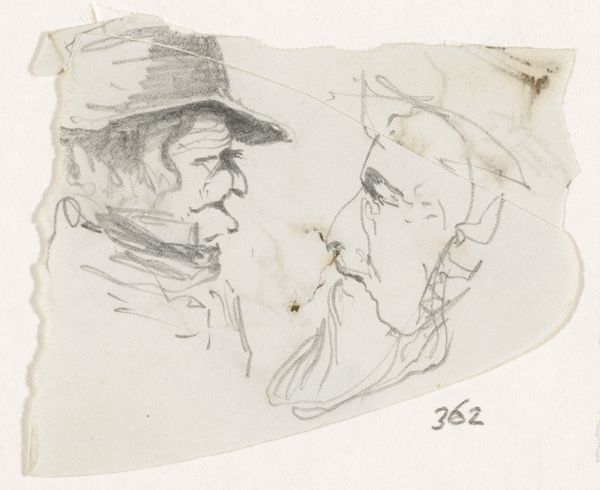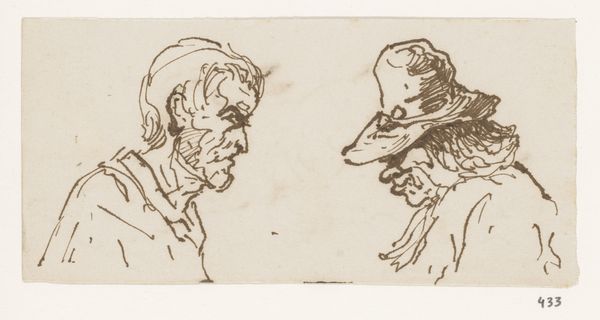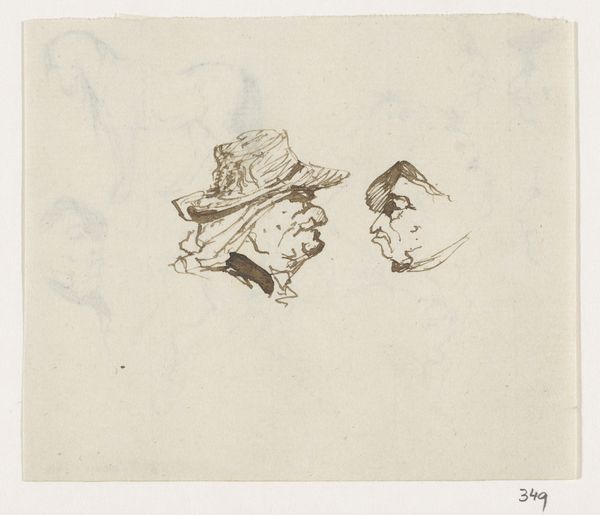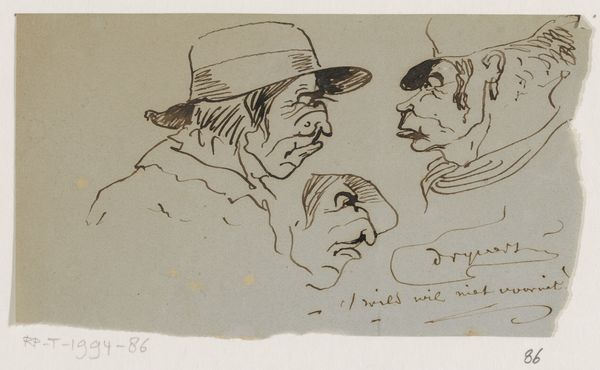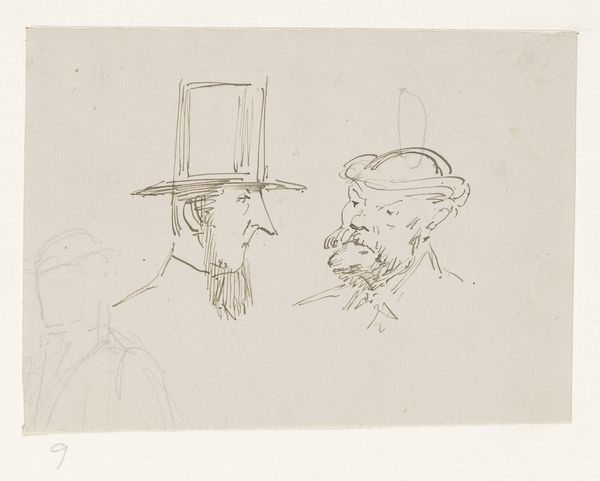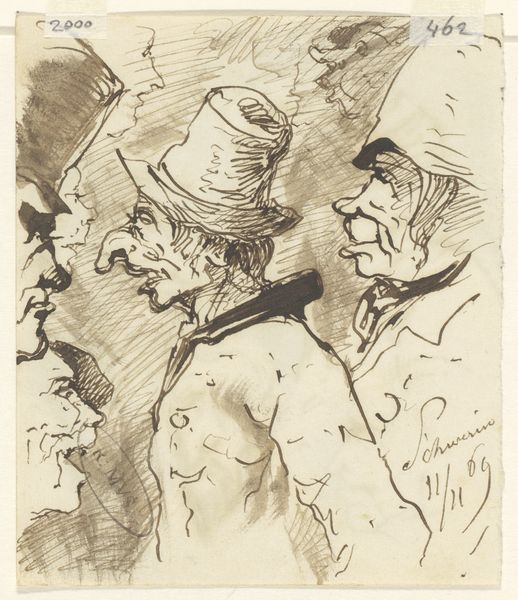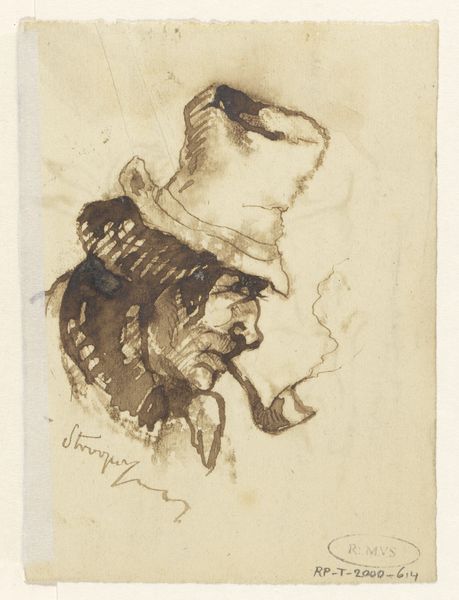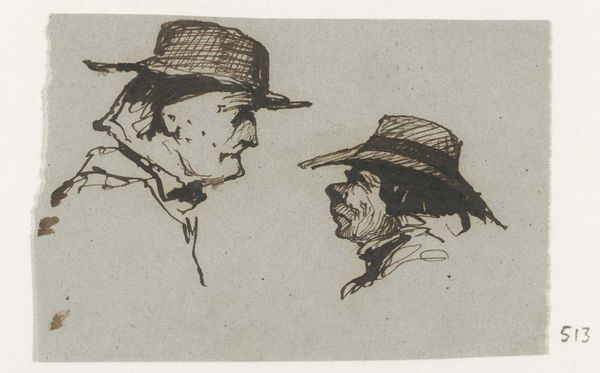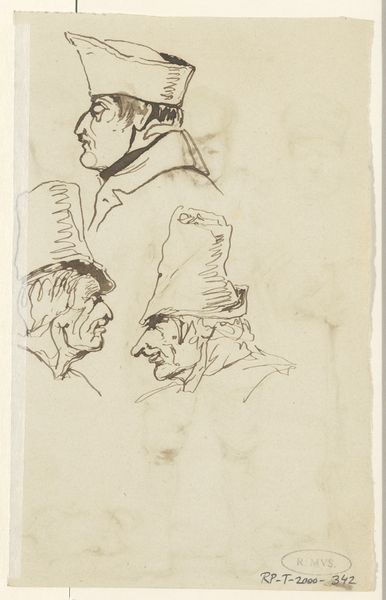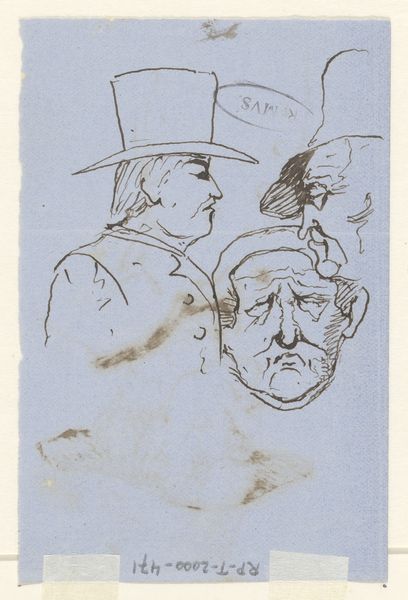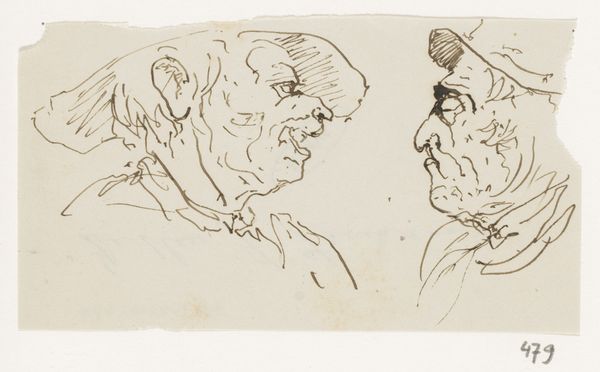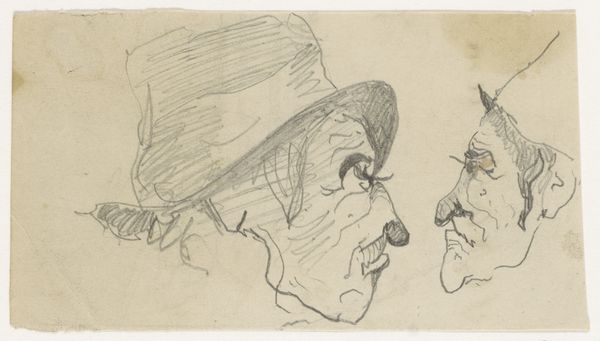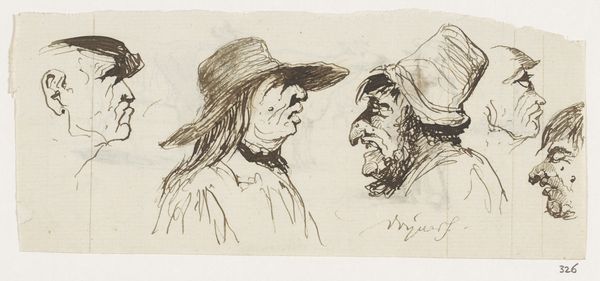
drawing, pencil
#
portrait
#
drawing
#
pencil sketch
#
romanticism
#
pencil
#
pencil work
#
genre-painting
Dimensions: height 95 mm, width 62 mm
Copyright: Rijks Museum: Open Domain
Curator: Up next, we have “Two Men in Top Hats, in Conversation,” a pencil drawing made by Johannes Tavenraat sometime between 1819 and 1881. Editor: The sketch is quite stark, and the details are minimal, but there's a captivating tension between the two figures, particularly in the angularity of their faces and the imposing top hats. Curator: That’s interesting. What symbols do you believe are most dominant here? The top hats immediately signify a certain social standing. What do these symbols convey about identity and power dynamics in 19th-century Netherlands? Editor: Well, beyond mere social class, the hats themselves seem to represent conformity. Their dialogue seems weighted, the figures appearing almost as caricatures or satirized archetypes. The men embody something almost clownish—a critical portrayal, perhaps, of the bourgeoisie. Curator: I agree that the faces are definitely accentuated to almost cartoonish extents. The pointed noses and receding chins exaggerate distinct, almost cruel personality traits that play into some very pervasive tropes. But I would take that reading further by connecting it to theories on physiognomy during this era. How were assumptions about class and character visually inscribed and disseminated, informing real-world social judgements? Editor: Right, but note how the eye is drawn immediately to the implied lines connecting their faces and focusing on their ongoing conversation. It seems deliberate and symbolic, inviting us to eavesdrop and dissect the essence of the encounter. They're like embodiments of ideas exchanging pointed commentary. Curator: Do you believe they're adversaries? What could the dialogue's social repercussions be? What power relations and social discourses are we looking at through the window, filtered through Johannes's gaze? I ask all this bearing in mind the social disruptions following the end of the Napoleonic era in 1815 and all the conservative measures that followed, with a re-entrenched social elite. Editor: It’s quite possible! All the things we discussed show the ways images carry cultural weight. This piece offers rich context for exploring cultural memory, don't you agree? Curator: Absolutely. These characters act as mirrors for social norms in a particularly unique context, provoking important social reflection on societal constructs and the power dynamics ingrained within.
Comments
No comments
Be the first to comment and join the conversation on the ultimate creative platform.
